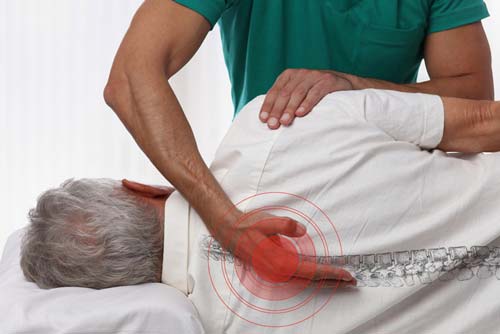The battle between doctors and chiropractors has been raging for decades.
Many doctors say that chiropractic is unproven. And chiropractors often view doctors as pill pushers who do more harm than good when they try to treat back pain.
Now a major, multi-year study might finally end the argument.
The nonprofit Spine Institute for Quality enrolled 750 back pain patients at three American military hospitals. Study participants were men and women with an average age of 31.1
The patients randomly were placed into one of two groups. One group received conventional medical care for back pain. This included seeing a medical doctor, taking pain medications, undergoing physical therapy, and doing back exercises.
The other group received the same care along with chiropractic treatments. These included hands-on spinal manipulation adjustments to restore proper bone alignment.
Patients were treated for six weeks. Their ability to function and pain levels were meticulously tracked during treatments and for six weeks after the treatments ended.
Chiropractic Nearly Doubles Pain Relief
The study found that chiropractic relieved pain and improved function:
- 57.5% of the patients receiving conventional plus chiropractic care showed improvement in pain levels. Only 32.5% of those receiving only conventional treatment did.
- 62.6% of the patients receiving conventional plus chiropractic care improved their back-related function. Only 46.6% of those getting only conventional treatment did.
Christine M. Goertz is a researcher with the Spine Institute for Quality. She is co-author of the study.
“We found that at every time point, those patients that received chiropractic care had better outcomes in terms of their level of pain intensity and pain-related disability,” she said.2
“We also found that patients who saw the chiropractor tended to be much more satisfied with the care they received,” said Goertz.
“The current study provides the strongest evidence to date that chiropractic care is safe, effective, and results in high levels of patient satisfaction.”
The study recently was published online in JAMA Network Open.3
Mainstream Back Pain Treatment Is Dangerous
Painkillers or surgery should never be your first choice for back pain treatment.
The overuse of prescription pain killers has led to the current opioid addiction epidemic that kills more than 60,000 Americans a year. And recent studies show that opioid painkillers don’t work against chronic back pain. The risks of back surgery are just as bad. They include nerve damage, incontinence, and in extreme cases, some form of paralysis.4 5
Chiropractic, on the other hand, is relatively safe. One major study found that serious adverse side effects-typically a stroke-occur in one out of 2 million manipulations.6
One more thing… For many years, doctors told back pain patients to rest. We now know this is actually harmful.
Numerous studies have shown that being sedentary can make back pain worse. If you stay active, back pain often goes away on its own within a few weeks.
Editor’s Note: There are other drug-free ways to reduce pain.
Discover the ocean oil that one study found cut inflammation in half after one month… The desert herb that may replace pain prescriptions for both osteoarthritis and rheumatoid arthritis… And the “magic” formula—with just three ingredients—that helped almost 70% of patients become pain-free in three months.
Get all the details HERE.
Like this Article? Forward this article here or Share on Facebook.
References:
1 https://www.healthline.com/health-news/science-says-chiropractor-can-help-solve-back-pain
2 https://consumer.healthday.com/alternative-medicine-information-3/chiropractic-news-128/chiropractic-has-role-to-play-in-easing-lower-back-pain-study-734066.html
3 https://jamanetwork.com/journals/jamanetworkopen/fullarticle/2680415
4 https://www.drugabuse.gov/related-topics/trends-statistics/overdose-death-rates
5 https://www.spine-health.com/treatment/back-surgery/laminectomy-and-spinal-stenosis-risks-and-complications
6 http://www.chiro.org/LINKS/ABSTRACTS/What_Are_the_Risks_of_Manual.shtml

